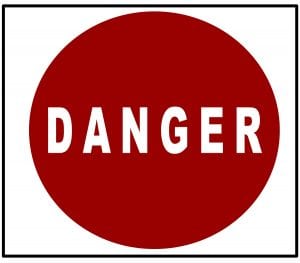Using Cannabis prior to driving increases the risk of being involved in a motor vehicle accident.
In the report The Health Effects of Cannabis and Cannabinoids: The Current State of Evidence and Recommendations for Research, an expert ad-hoc committee of the National Academies of Sciences, Engineering, and Medicine presents nearly 100 conclusions related to the health effects of cannabis and cannabinoid use and makes recommendations for an agenda to help expand and improve cannabis research efforts and better inform future public health decisions.
Its findings regarding Cannabis use and driving are found in the Chapter Highlights section. This is a significant finding particularly if employees in your workforce are driving motor vehicles. Employers should not be wary of testing for marijuana if employees are driving vehicles on the road, operating equipment, or in a safety sensitive position.
If an employer is in a state where marijuana is available as a medical substance or on a recreational basis, there is no need to accept individuals currently under the influence of the drug. We have stated before that just because alcohol is legal doesn’t mean you have to accept an employee under the influence of alcohol working on the job. Dittos for marijuana.
Testing employees for being under the influence of drugs, including marijuana, is just as important as testing them for alcohol.
Our previous blog post listed the following major considerations:
· Perform a thorough job analysis that includes the purpose or reason the job exists, where the job will be, skills and knowledge need to complete the tasks.
· Have a clear job description that can be presented to the applicant and can provide the basis for employee performance reviews. Make sure you comply with applicable federal and state laws.
· Have a very clear understanding of each state’s particular laws regarding the use of drugs, particularly marijuana.
· Given that marijuana may be legal in a state to treat diseases and illnesses, an employer may be required to engage in communication with the employee about the illness so as to comply with the Americans with Disabilities Act.
· Conduct random drug and alcohol testing on employees in applicable job positions.
· In states where medical marijuana is allowed for diseases and illnesses, employers need to treat knowledge of an employee being required to use marijuana as though they qualify under the Americans with Disabilities Act. Can reasonable accommodations be made?
If you need help completing these tasks write us an email, info@randisiandassociates.com, place HR360 in the subject line and we will be glad to provide an annual subscription to HR360 service.
The key step is to perform a thorough job analysis and have a clear job description. The job description should make it clear that operating in that job without being under the influence of any substance is one of the essential functions of the job.
If employers operate in states where marijuana, that doesn’t mean that there is a carte blanche acceptance of an employee under the influence of marijuana. We have written that an employer need not tolerate an employee under the influence of alcohol. Why should operating under the influence of a drug be different, even if it is marijuana? This job description becomes particularly important where employees are in safety sensitive operating machinery or vehicles that can injure or kill.
Other findings in the report are:
· In states where cannabis use is legal, there is increased risk of unintentional cannabis overdose injuries among children.
· There is modest evidence that cannabis use is associated with one subtype of testicular cancer.
· There is minimal evidence that parental cannabis use during pregnancy is associated with greater cancer risk in offspring.
· Cannabis use is likely to increase the risk for developing substance dependence (other than cannabis use disorder).
· Heavy cannabis users are more likely to report thoughts of suicide than non-users.
· Regular cannabis use is likely to increase the risk for developing social anxiety disorder.



